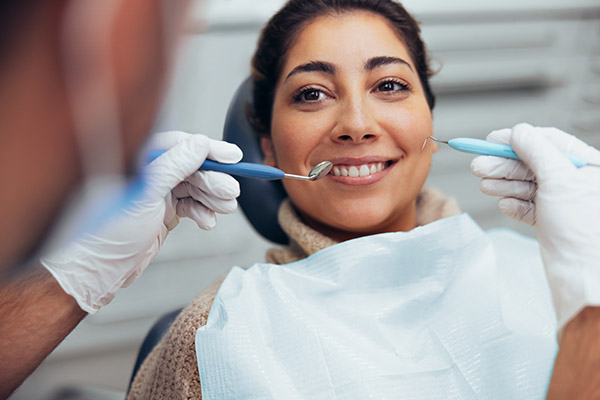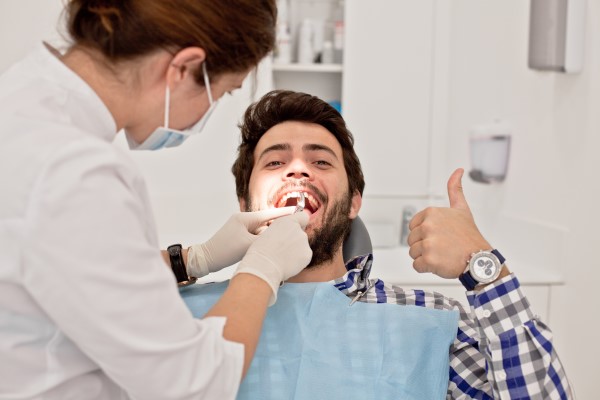 Patients might have a dental checkup to see if there are any cavities. While looking for holes is a big part of the appointment, it is not the only thing dentists look for. They can also locate gum disease and other oral health concerns. Continue reading to learn what techniques the dentist will use.
Patients might have a dental checkup to see if there are any cavities. While looking for holes is a big part of the appointment, it is not the only thing dentists look for. They can also locate gum disease and other oral health concerns. Continue reading to learn what techniques the dentist will use.
What a dental checkup includes
A comprehensive dental exam is often recommended every few years for patients. It is a good way of looking at gum health and finding tooth decay. Plus, the dental checkup involves examining the neck, mouth, and head. It is often used for new patients or those who have not had one in recent years.
The dentist will look over the head and neck to find issues such as oral cancer. The dentist might feel the area for tenderness or swelling, which might show there are diseases. The dentist can look at the jaw joint to see if it is working correctly. The dentist will also look over the gum tissue to see if there is gum disease.
Getting a cleaning
Brushing and flossing at home are essential in preventing disease since it removes most of the plaque. But it might not remove everything, so the dentist might do a professional cleaning. That allows them to remove hardened plaque, such as tartar or calculus. That cannot get removed through flossing or brushing. Many times, the dentist uses a metal instrument for cleaning the teeth. However, ultrasonic devices are also becoming more common.
Next, the dentist will polish the teeth. That further removes plaque and gets rid of stains. It also makes them smoother, so the plaque and bacteria are less likely to stick around. The polish is abrasive and has fluoride in it. The dentist might use a rubber brush or cup to apply it.
Finding cavities
The dentist might do some X-rays. These might not be done at every visit. Still, many new patients will get them. The dentist will think about the patient’s dental history and risk of cavities to learn how often to give X-rays. These can find gum disease or tooth decay, as well as other oral health issues.
A dental checkup also involves looking for signs of tooth decay. They will look at every surface and use a tool to probe them. That will help the dentist find potential issues since decayed enamel is often softer. If the patient has braces or restorations like crowns, the dentist will also see if there are issues.
Offering dental advice
The dentist might offer instructions for the patient to follow while at home. That will be based on the exam results. The dentist can also provide general advice. If there are issues, the dentist can recommend the next steps to take.
Make an appointment for a dental checkup today
Patients who want to know more about cavities can make an appointment. That way, the dentist can tell the patient more about these techniques. The dentist can find issues early on. Making an appointment today is the first step.
Request an appointment or call Palm Beach Dentistry at 561-225-2057 for an appointment in our Delray Beach office.
Recent Posts
Having a dental X-ray is essential at a dental checkup to find decay and other teeth issues. Managing and diagnosing different conditions often happens with an X-ray. The dentist can use the X-ray if it is hard to detect the problems with a simple visual exam. The X-ray can take images of the jaw, tooth…
Dental checkups are a common way of preventing gum disease and cavities. Not every visit is the same, but knowing what to expect can help you better understand the process. Your dentist will go over your medical history during the appointment. That way, the dentist can think about family conditions that might affect your oral…
Every six months, you should have a dental checkup. During each visit, a hygienist cleans the patient’s teeth. Then, a dentist looks for any potential or existing problems. The main goal is to correct an issue before it worsens. That way, you enjoy healthy teeth and gums from one appointment to the next. Keep reading…


